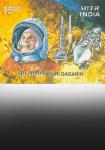Thanks to Rajan we are an inflation-targeting country now
 As an excellent listener and communicator, the outgoing Reserve Bank of India Governor Raghuram Rajan used all the modes of communication to stop the market from running ahead and got it open-mouthed instead, says a report.
As an excellent listener and communicator, the outgoing Reserve Bank of India Governor Raghuram Rajan used all the modes of communication to stop the market from running ahead and got it open-mouthed instead, says a report.
Rajan will demit office on September 6, and will return to teaching.
His three-year tenure has seen many ups and downs in terms of macro-challenges, policy choices and managing fiscal and monetary flanks of the stabilisation policy.
"Rajan is an excellent listener and his policy decisions reflect his careful listening of the bankers' opinions. Being a wonderful listener universally makes him an excellent communicator," State Bank of India chief economist Soumyakanti Ghosh said in the ecowrap report on Friday.
"Rajan during his tenure has literally championed both conventional and unconventional modes of communication and not allowed the market to run ahead, instead open-mouthed the market," he said.
Such communication had the desired impact on movements in the exchange rate and in the term structure of interest rates being entirely consistent with RBI's monetary policy stance, the report said.
"Thanks to Rajan we are an inflation-targeting country now. The primary defining characteristics of inflation targeting, symmetry, forward-looking nature and flexibility, require disciplined communication efforts for monetary policy to be credible and effective.
"Rajan has ensured through his judicious communication that inflation targeting is now well-entrenched in the psyche of each and every stakeholder in the financial sector space," the report says.
Under Rajan's leadership, RBI has delivered on all aspects of banking to develop a sound and efficient financial system, which will contribute to the growth process of the country, it said.
Some of his major achievements are: New policy framework, formation of monetary policy framework, implementation of asset quality review to clean balance sheets of PSBs, new banking licence in private sector and licensing small and payment banks, universal payment interface for integrated mobile banking system and last but not the least the transparency in public disclosures of RBI.
When Rajan took the charge on September 4, 2013, the rupee was trading at 63.8 and is today at 66.9. After a year of him assuming the office rupee had gained 4.5 per cent to 60.9 in September 2014.
Before Rajan took over, the rupee had fallen to its record low of 68.85 on August 28, 2013.
In his three-year tenure, the foreign exchange reserves increased by $91 billion from $276 billion to $367 billion, which is a record high, the report notes.
Higher reserves helped the country increase its import cover from 8.1 months in September 2013 to 12.4 months now.
Under him, RBI has taken a number of steps to manage the system liquidity in a better way. It narrowed LAF corridor and introduced MCLR for a better transmission of policy rate.
On financial inclusion, RBI has issued two banking licences in the private sector and introduced innovative banking in terms of small finance banks and payment banks.
Rajan's tenure saw two new universal banks, IDFC Bank and Bandhan Bank, started their operations.
The RBI gave in-principle license to 10 entities for small finance banks and 11 for payment banks.
The central bank took a number of steps to reduce NPAs in the banking system. The signs of rising stress in the banking system, measured by gross NPA, increased to 8.7 per cent in June 2016 from 4.2 per cent in September 2013. However, the pace of formation of fresh NPA moderated, the report said.
The stressed assets (GNPA and restructured standard assets) for the banking system as a whole, which stood at 11.5 per cent as at the end of September 2013, moved up sharply to 14.5 per cent at the end of December 2015.
"The rising stressed assets refrain banks to lend credit, by which credit growth slowed to single digit from a robust growth of 17-18 per cent in 2013 and before," the report said.
Deposits growth has also reduced significantly to sub-9 per cent from a double digit growth.
Rajan had cut rates five times and increased three times in the last three years.
"On a lighter note, Rajan appears to be a dove, compared to YV Reddy and D Subbarao when their rate cuts/hike are analysed," the report said.







 © 2025
© 2025